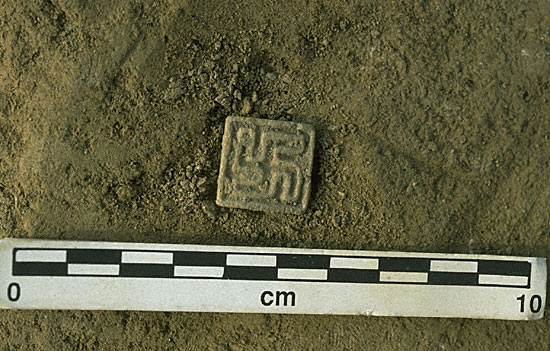

"Faience button seal (H99-3814/8756-01) with swastika motif found on the floor of Room 202 (Trench 43)" in Harappa, 2000-01; swastika designs are found in other early civilizations elsewhere in the world as well
Source: http://www.harappa.com/indus4/315.html
(downloaded Sept. 2006)
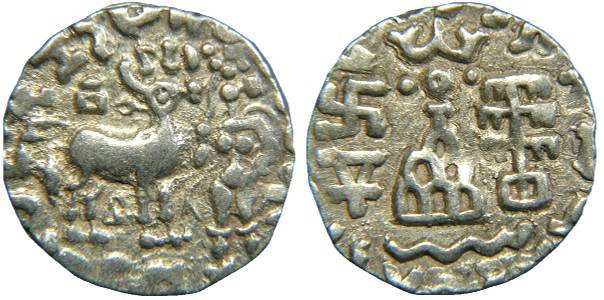
A coin from Kulinda (*wiki*), 2nd-1st c. BCE, displays a swastika among Buddhist symbols
Source:
http://www.vcoins.com/ancient/dltcoins/store/viewItem.asp?idProduct=1139&large=1
(downloaded May 2006)
"Kunindas, Amoghabhuti. AR Drachm, c. 2nd-1st Century BC. Obverse: Brahmi Rajna Kunimdasa Amoghabhutisa Maharajasa. Bull (deer?) standing right, Goddess Ardoksho standing in front, holding lotus. Reverse: Kharosthi Rana Kunidasa Amoghabhutisa Maharajasa. Stupa surrounded by ancillary Buddhist symbols: Y-monogram, swastika, nandipada and tree-in-railing, river symbol below. 1.91gm, 17mm."
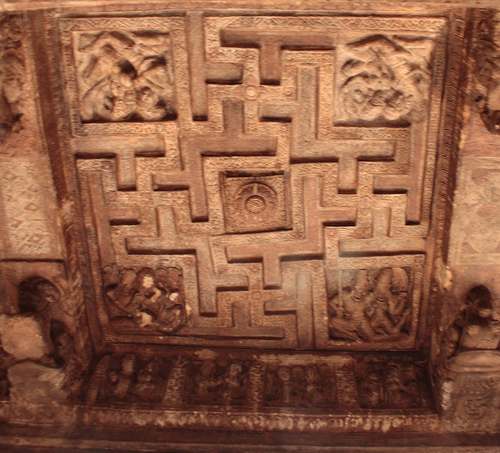
The swastika-patterned ceiling of a cave-temple at Badami, c.500's-700's; the swastikas are formed on the ceiling by the interstices of the high-relief shapes; *a postcard of the same view*
Source: http://www.flickr.com/photos/ganesh_kumar/270796965/
(downloaded Nov. 2006)
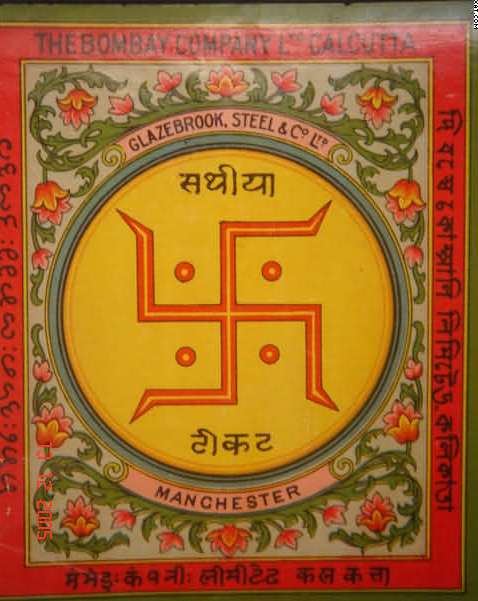
The swastika, a sign of auspiciousness (from su + asti, "may it be well," in Sanskrit) adorns a textile label from the 1880's
Source: ebay, Apr. 2006
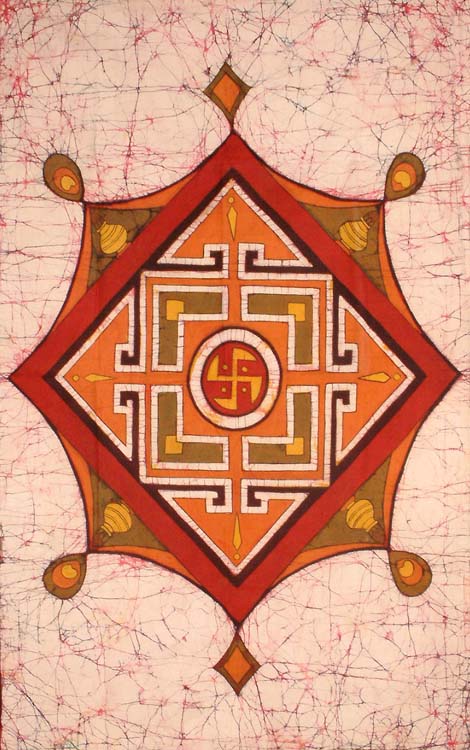
"Auspicious Symbols," a modern batik on cotton with a swastika in the center of a yantra
Source: http://www.exoticindia.com/product/BH08/
(downloaded Apr. 2006)
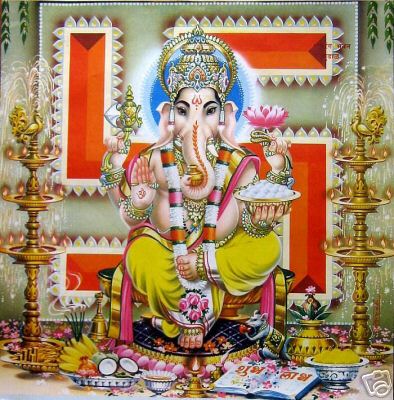
A modern religious poster uses a swastika as a backdrop for Ganesh
Source: ebay, Oct. 2007
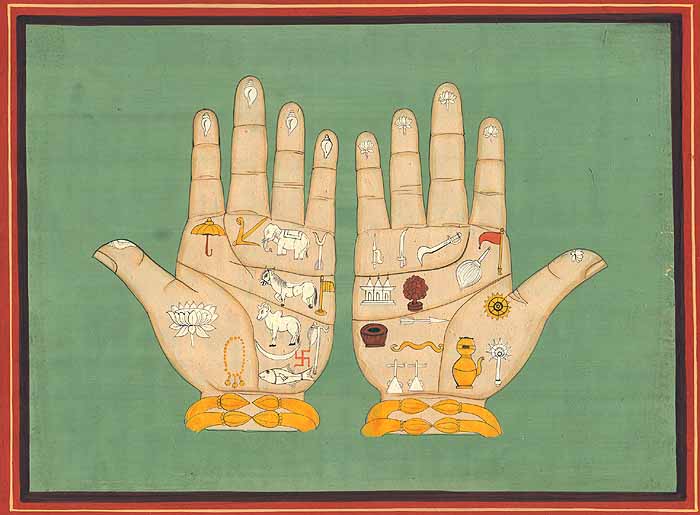
"The Lotus Handprints of Lord Caitanya Mahaprabhu," full of auspicious symbols; a modern watercolor
Source: http://www.exoticindia.com/product/HU25/
(downloaded Apr. 2006)
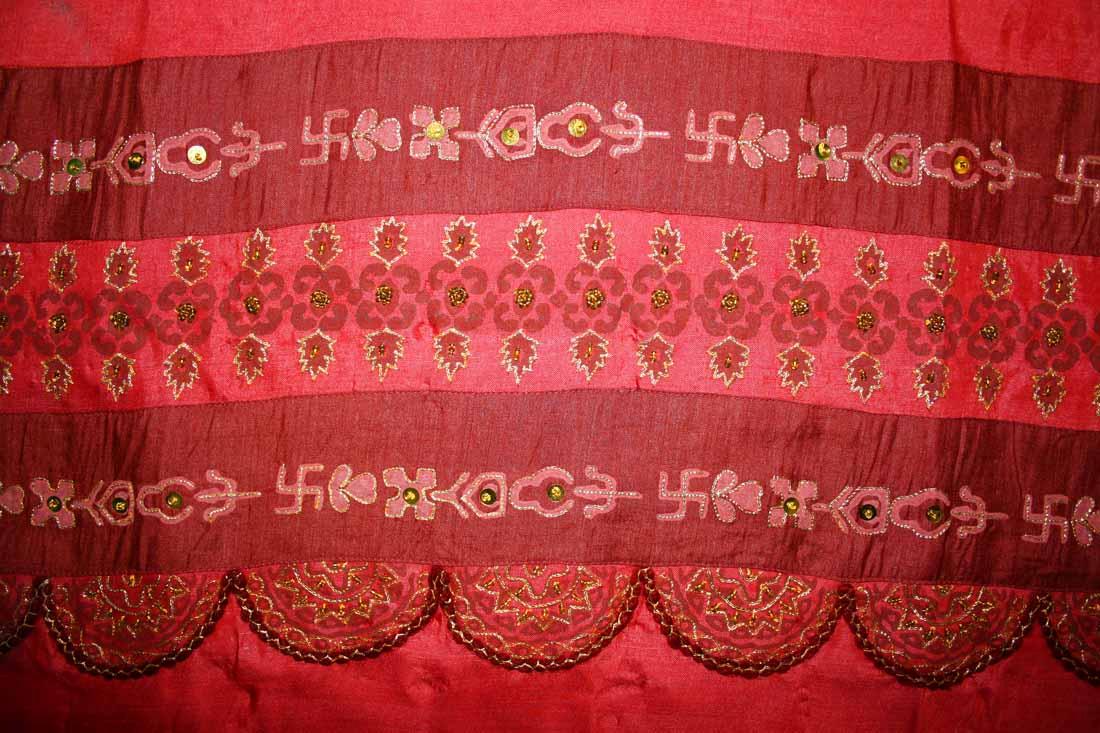

== Indian Routes index == Indian Routes sitemap == Glossary == FWP's main page ==